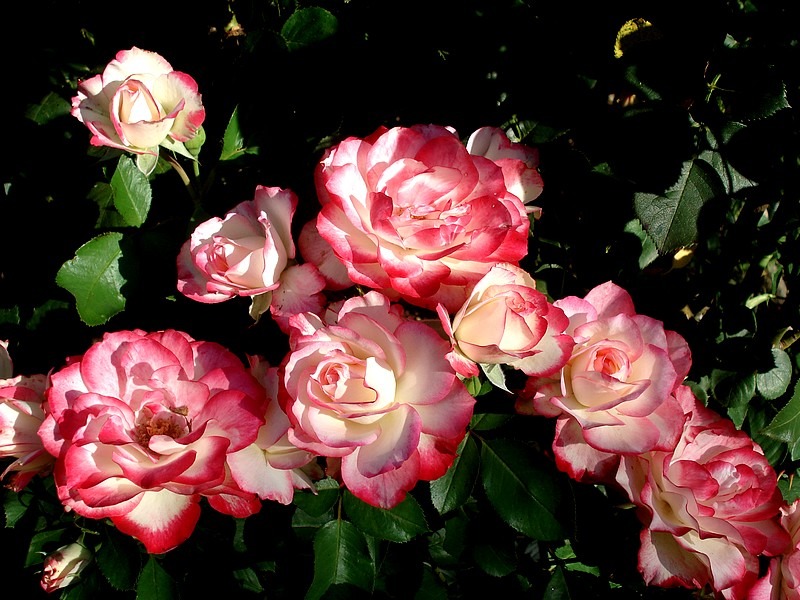|
|
'Jubilé du Prince de Monaco ®' rose Description

Photo courtesy of Maurice REYBAUD
HMF Ratings:
136 favorite votes.
Average rating:
EXCELLENT.
Bloom:
Light yellow to white, vermilion edges. None to mild, sweet fragrance. 35 to 40 petals. Average diameter 4". Large, full (26-40 petals), cluster-flowered, in small clusters, cupped-to-flat bloom form. Blooms in flushes throughout the season. Medium, pointed, ovoid buds.
Habit:
Medium, armed with thorns / prickles, bushy, compact. Matte, medium green, dense foliage.
Height: 28" to 35" (70 to 90cm). Width: 31" (80cm).
Growing:
USDA zone 6b and warmer. Can be used for beds and borders, container rose, garden or landscape. Hardy. Disease susceptibility: very disease resistant. Spring Pruning: Remove old canes and dead or diseased wood and cut back canes that cross. In warmer climates, cut back the remaining canes by about one-third. In colder areas, you'll probably find you'll have to prune a little more than that. Requires spring freeze protection (see glossary - Spring freeze protection) .
Patents:
United States - Patent No: PP 12,802 on 23 Jul 2002 VIEW USPTO PATENTApplication No: 09/697,167 on 27 Oct 2000 Floribunda Rose Plant Named `Meisponge'
Alain A. Meilland, Antibes, France
... large bicolored white and red blossoms... no fragrance... very good disease resistance... Parentage: 'Meichoiju' x ('Meidanu' x 'Macman' ['Matangi'])... Height: Approximately 70 to 80 cm on average at the end of the growing season. Width: Approximately 80 cm on average at the end of the growing season... Flower: flat cup-shaped... Diameter: commonly approximately 8 to 10 cm on average... Disease resistance: very good with respect to Powdery Mildew and Black Spot... Hardiness: Has withstood temperatures above -10.degree. C.
Notes:
Jubile du Prince de Monaco is sold in the USA as Cherry Parfait, where it is classified as a grandiflora because it is a considerably larger plant. Cherry Parfait is sold in Europe under the name Jubile du Prince de Monaco, It is also given a different classification in Europe, where it is a considerably smaller plant.
|